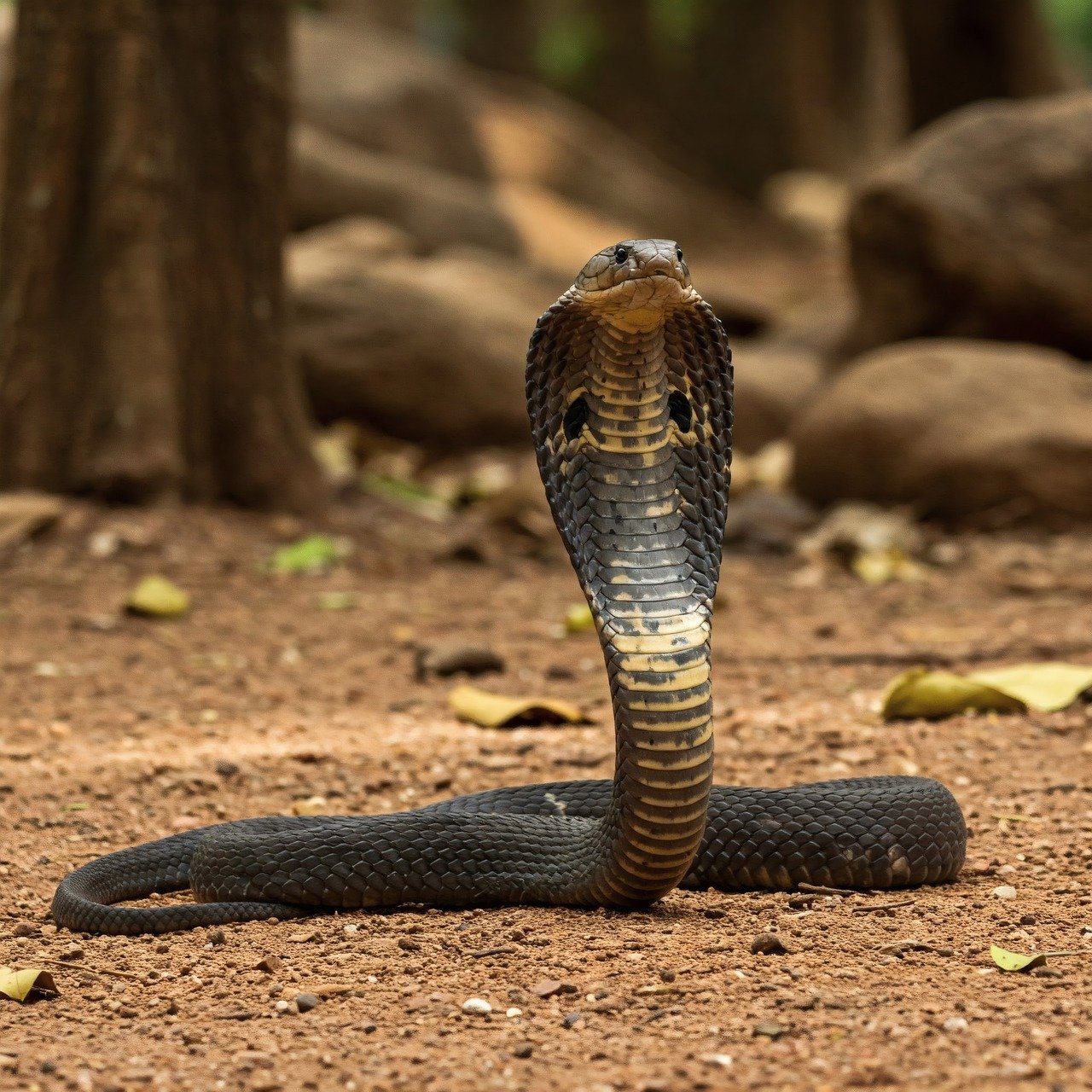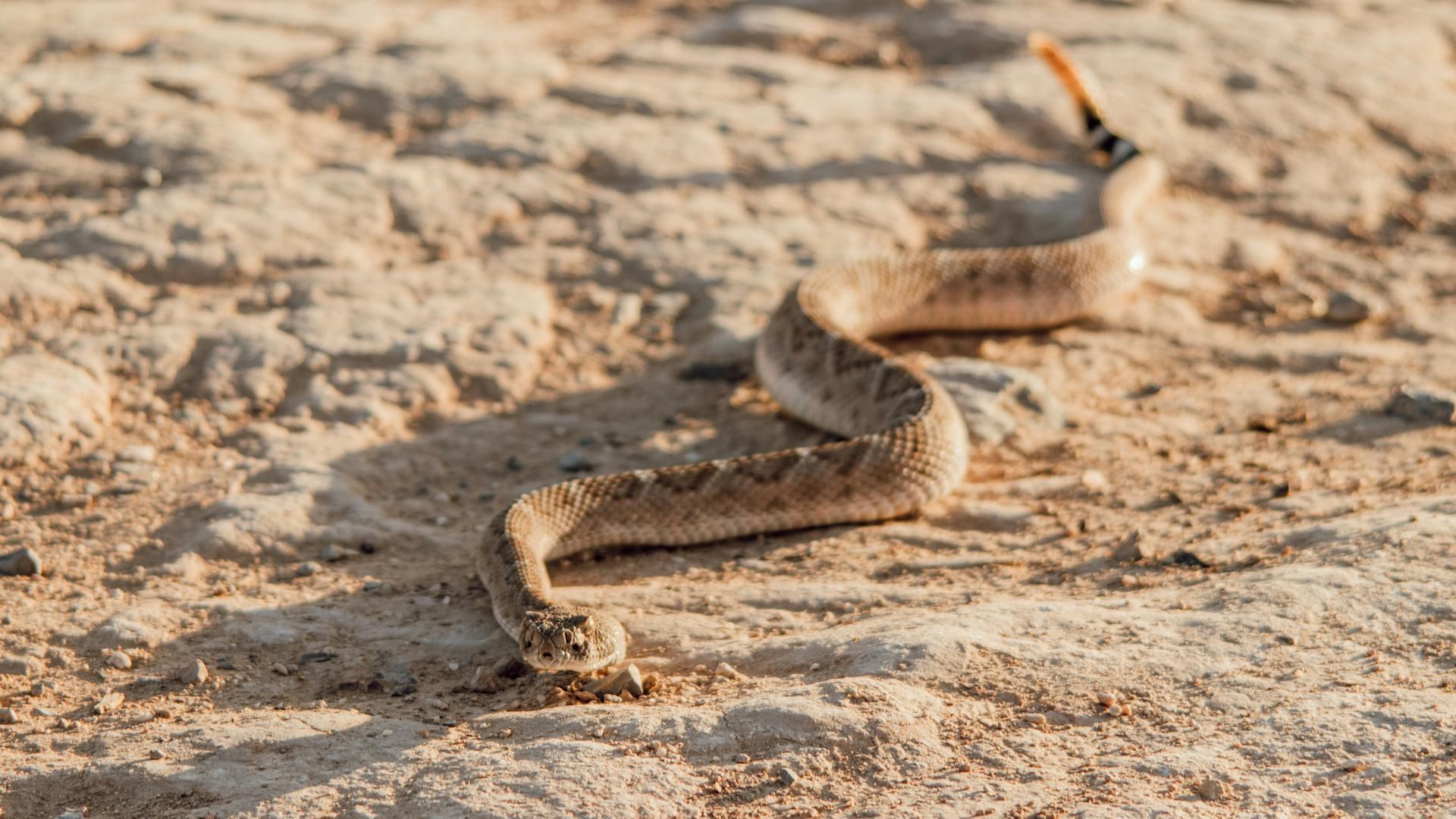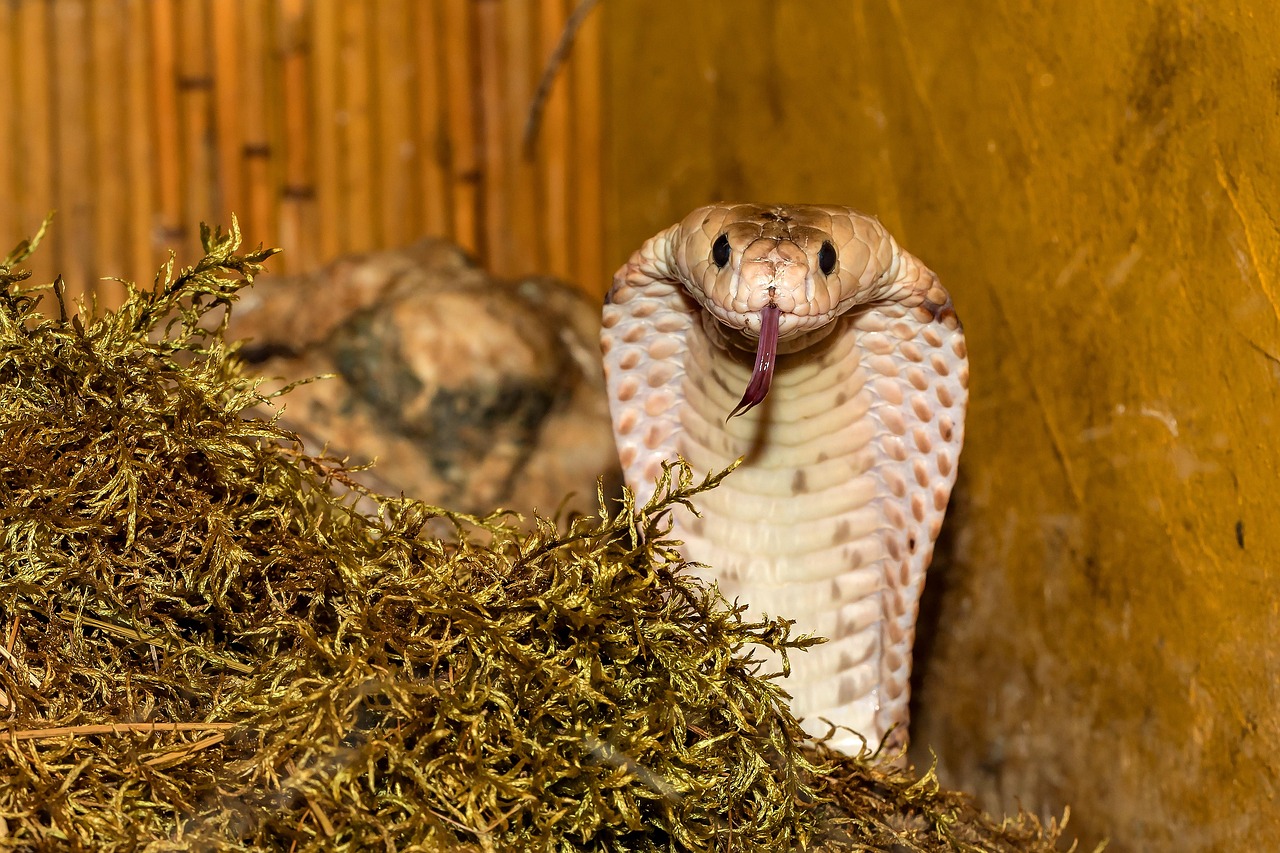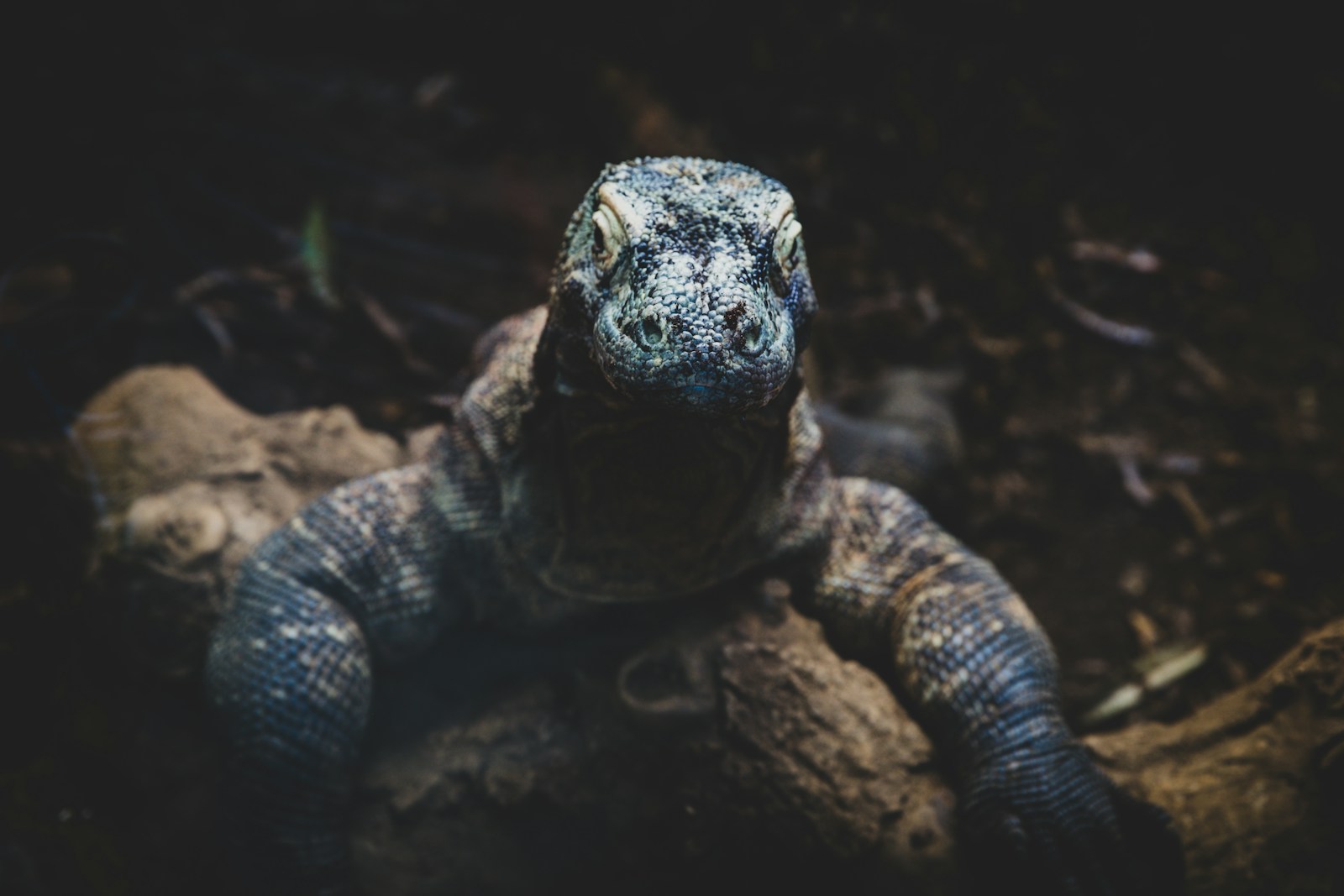When we think of dangerous wildlife, snakes often slither to the forefront of our fears. While most serpents prefer to avoid human interaction altogether, certain species have earned reputations for their confrontational attitudes and willingness to strike when threatened. Understanding these aggressive snake species is crucial not just for personal safety, but also for appreciating the evolutionary adaptations that have shaped their defensive behaviors. This article explores the world’s most aggressive snake species, examining their behaviors, habitats, and the factors that contribute to their combative temperaments.
The Black Mamba: Africa’s Lightning-Fast Aggressor
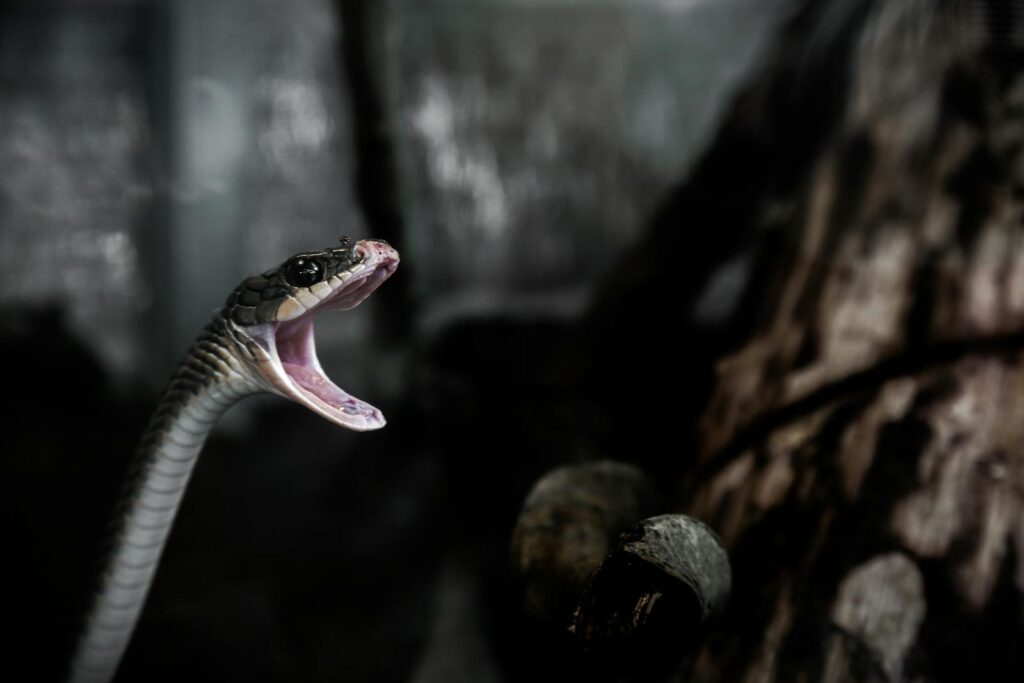
The Black Mamba (Dendroaspis polylepis) stands as perhaps the most feared snake in Africa, notorious not just for its potent venom but for its exceptional aggression when cornered. Capable of reaching speeds up to 12.5 miles per hour, this slender gray-brown serpent (despite its name) can deliver multiple strikes in rapid succession when threatened. Unlike many snakes that prefer retreat, the Black Mamba is known to actively defend its territory, sometimes pursuing perceived threats for considerable distances. When agitated, it raises the front third of its body off the ground, flattens its neck into a hood, opens its inky-black mouth as a warning display, and hisses aggressively before striking with remarkable precision.
King Cobra: The Regal Defender

The King Cobra (Ophiophagus hannah) earns its royal title not just as the world’s longest venomous snake, but through its imposing defensive displays and territorial aggression. When threatened, this magnificent creature can raise the front third of its body straight off the ground, expanding its distinctive hood while producing a bone-chilling hiss that sounds almost like a growling dog. What makes the King Cobra particularly notable among aggressive snakes is its intelligence and memory – it can recognize individual humans and remember those who have disturbed it previously. During breeding season, males become exceptionally territorial, displaying heightened aggression toward anything they perceive as competition or threat to their mating opportunities.
Saw-Scaled Viper: Small But Deadly
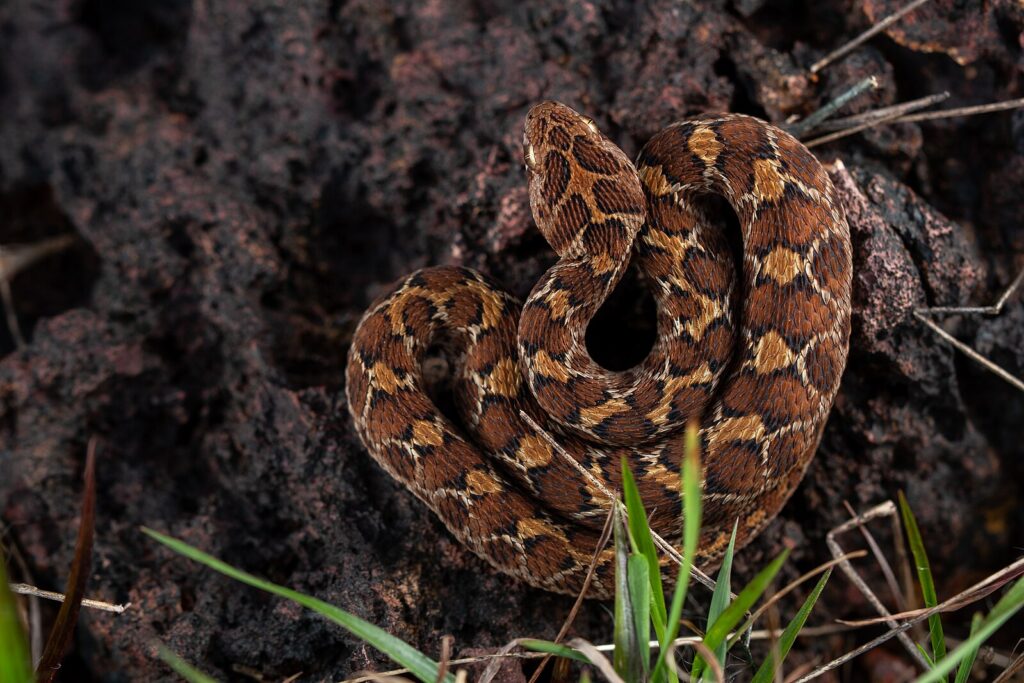
The Saw-Scaled Viper (Echis carinatus) may be relatively small, typically reaching only 1-3 feet in length, but it compensates with an extraordinarily aggressive temperament that has earned it a place among the world’s deadliest snakes. Native to parts of Africa, the Middle East, and the Indian subcontinent, this snake has perfected a unique warning system – it rubs its serrated scales together to produce a distinctive rasping sound similar to sandpaper, serving as a final warning before it strikes.
What makes the Saw-Scaled Viper particularly dangerous is its tendency to stand its ground rather than flee when encountered, coupled with its extremely potent hemotoxic venom that causes catastrophic bleeding in victims. Its aggressive nature and prevalence in heavily populated areas have made it responsible for more human deaths than many larger or more venomous species.
Inland Taipan: Australia’s Reluctant Killer
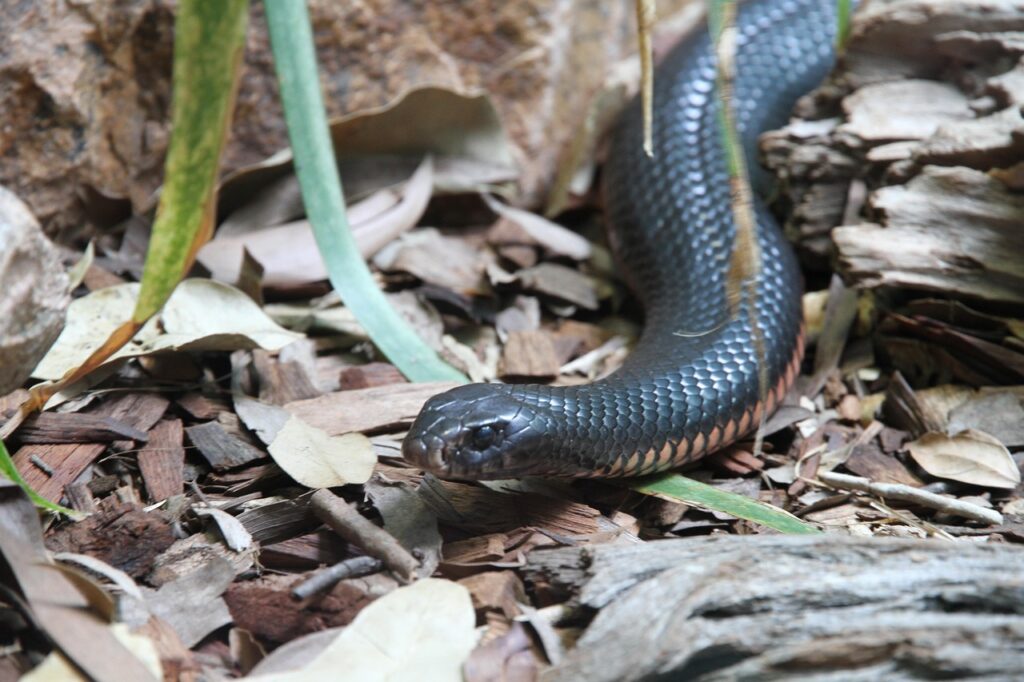
While the Inland Taipan (Oxyuranus microlepidotus) possesses the most potent venom of any land snake on Earth – capable of killing 100 adult humans with a single bite – its aggression level doesn’t match its toxicity. Found in the arid regions of central east Australia, this snake typically displays shy behavior, preferring to avoid confrontation when possible. However, when cornered or threatened, the Inland Taipan transforms, becoming an extremely aggressive defender capable of inflicting multiple rapid strikes with near-perfect accuracy.
Its venom contains a potent neurotoxin that can cause death in as little as 45 minutes if left untreated, making any aggressive encounter potentially fatal. Despite its deadly capabilities, actual attacks on humans remain rare due to its remote habitat and preference for avoiding human contact.
Eastern Diamondback Rattlesnake: America’s Defensive Giant
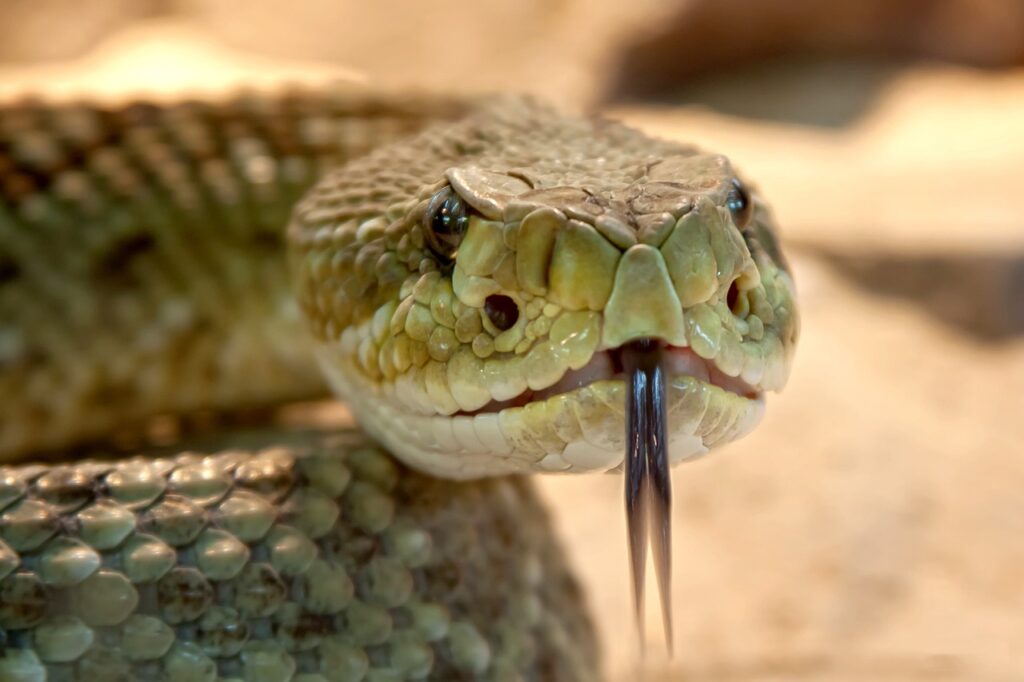
The Eastern Diamondback Rattlesnake (Crotalus adamanteus) holds the title of the largest and most dangerous rattlesnake in North America, combining impressive size with a notably aggressive defensive posture. When threatened, this magnificent pit viper coils its body into a tight defensive S-shape, vibrates its signature rattle vigorously, and maintains unwavering eye contact with the perceived threat. Unlike many snake species that prefer to retreat, the Eastern Diamondback often stands its ground, prepared to defend itself with a lightning-fast strike that can reach nearly a third of its body length. Its large size – regularly exceeding 6 feet and sometimes approaching 8 feet – means it can inject substantial quantities of tissue-destroying venom, while its muscular build allows it to strike with tremendous force and precision.
Russell’s Viper: The Unforgiving Serpent
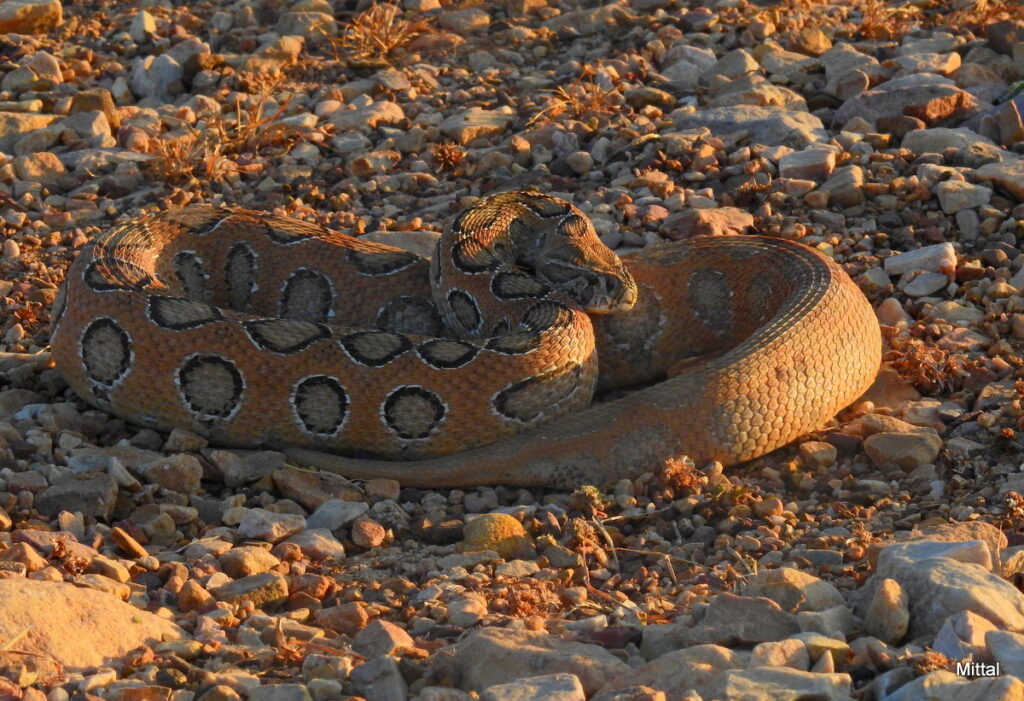
Russell’s Viper (Daboia russelii) has earned a fearsome reputation across its range in Asia, not just for its deadly venom but for its notoriously aggressive temperament when disturbed. This heavy-bodied snake, adorned with three rows of dark brown or black spots, produces a loud, intimidating hiss when threatened that has been compared to a pressure cooker releasing steam.
What makes this species particularly dangerous is its tendency to stand its ground rather than retreat, coupled with its habit of delivering full-commitment bites where it injects large volumes of hemotoxic venom. Russell’s Vipers are responsible for thousands of fatalities annually across countries like India, Sri Lanka, and Myanmar, often encountering humans in agricultural settings where they hunt the rodents attracted to crops.
Mozambique Spitting Cobra: The Long-Distance Defender

The Mozambique Spitting Cobra (Naja mossambica) elevates aggressive defense to an art form with its ability to project venom accurately at a threat’s eyes from distances up to 8 feet away. This remarkable adaptation allows the snake to defend itself without engaging in close combat, spraying its cytotoxic venom with pinpoint accuracy by forcing it through forward-facing holes in its fangs. When confronted, this cobra raises its head and upper body, spreads its distinctive hood, and can deliver multiple “spits” in rapid succession, aiming specifically for the eyes of the perceived threat. Beyond this unique defense mechanism, the Mozambique Spitting Cobra is also known for its willingness to stand its ground and its readiness to bite when cornered, making it one of Africa’s most assertively defensive serpents.
Fer-de-Lance: Central America’s Ambush Predator

The Fer-de-Lance (Bothrops asper) combines aggressive territorial behavior with a hair-trigger defensive response, earning it a fearsome reputation throughout Central and South America. Unlike many venomous snakes that give clear warnings before striking, this pit viper is known for its unpredictable nature and tendency to strike with minimal provocation, sometimes seeming to attack rather than simply defend. Their muscular bodies allow them to strike with tremendous force, while their long fangs deliver substantial amounts of tissue-destroying venom deep into their victims. What makes the Fer-de-Lance particularly dangerous is its adaptability to human-altered environments, often remaining near agricultural areas and trails where encounters with humans become inevitable, coupled with its excellent camouflage that makes it nearly invisible among forest leaf litter.
Puff Adder: Africa’s Patient Striker
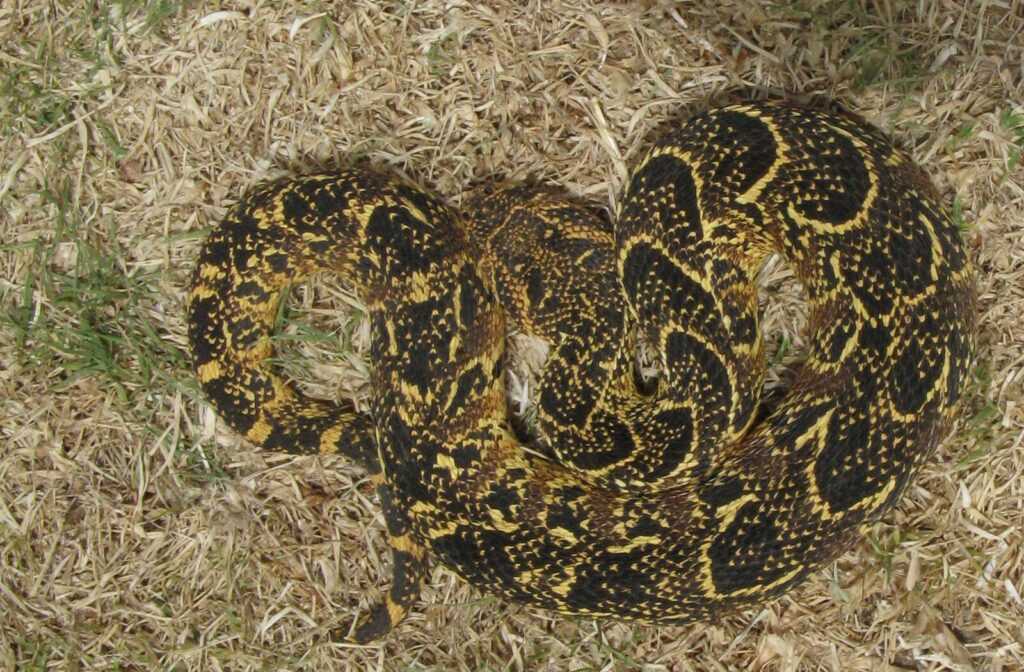
The Puff Adder (Bitis arietans) employs a different kind of aggression – the patience of an ambush predator combined with explosive striking speed when threatened. Rather than fleeing from approaching threats, this thick-bodied viper often relies on its superb camouflage, freezing in place until the very last moment before launching its defense. When disturbed, the Puff Adder lives up to its name by inflating its body and producing a loud, continuous hissing sound as a warning display.
What makes this snake particularly dangerous is its combination of highly cytotoxic venom, exceptionally long fangs (up to 1.5 inches), and a strike that has been measured at 175 miles per hour – faster than humans can react. To add to its dangerous reputation, the Puff Adder is responsible for more snakebite fatalities in Africa than any other species.
Philippine Cobra: The Island Aggressor
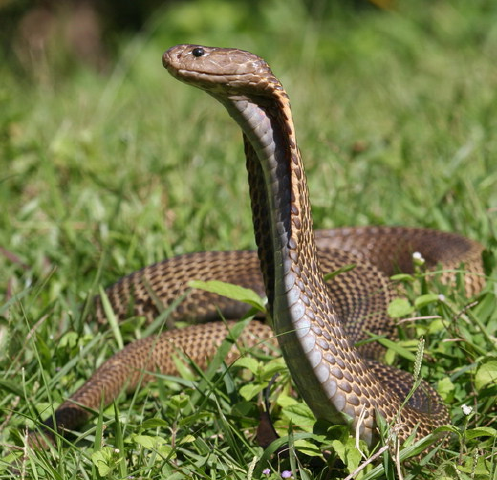
The Philippine Cobra (Naja philippinensis) has earned its reputation as one of the most aggressive cobra species, known for its willingness to stand its ground and attack when threatened rather than attempt escape. Endemic to the northern regions of the Philippines, this highly venomous elapid raises an impressive hood when confronted and can deliver fatal bites containing potent neurotoxins that attack the respiratory system. Like its relative the Mozambique Spitting Cobra, the Philippine Cobra can also project its venom through forward-facing channels in its fangs, accurately targeting the eyes of threats from distances up to three meters.
What makes encounters with this species particularly dangerous is its tendency to deliver multiple strikes in rapid succession, potentially injecting large amounts of venom that can lead to respiratory failure within 30 minutes without proper medical intervention.
Gaboon Viper: The Hidden Heavy-Weight

The Gaboon Viper (Bitis gabonica) approaches aggression differently from many species on this list, relying on absolute stealth followed by devastating striking power rather than active pursuit or displays. Possessing the longest fangs of any snake species – sometimes exceeding two inches – and capable of delivering massive amounts of venom in a single bite, this snake compensates for its relatively slow movements with patience and precision.
When threatened, the Gaboon Viper’s aggression manifests in its steadfast refusal to retreat, instead remaining motionless until the threat is within striking distance. The snake’s exceptional camouflage, mimicking forest floor leaf litter, combined with its unusual willingness to remain in place even when detected, makes it particularly dangerous to unwary travelers in the forests and woodlands of sub-Saharan Africa.
Western Green Mamba: The Arboreal Attacker
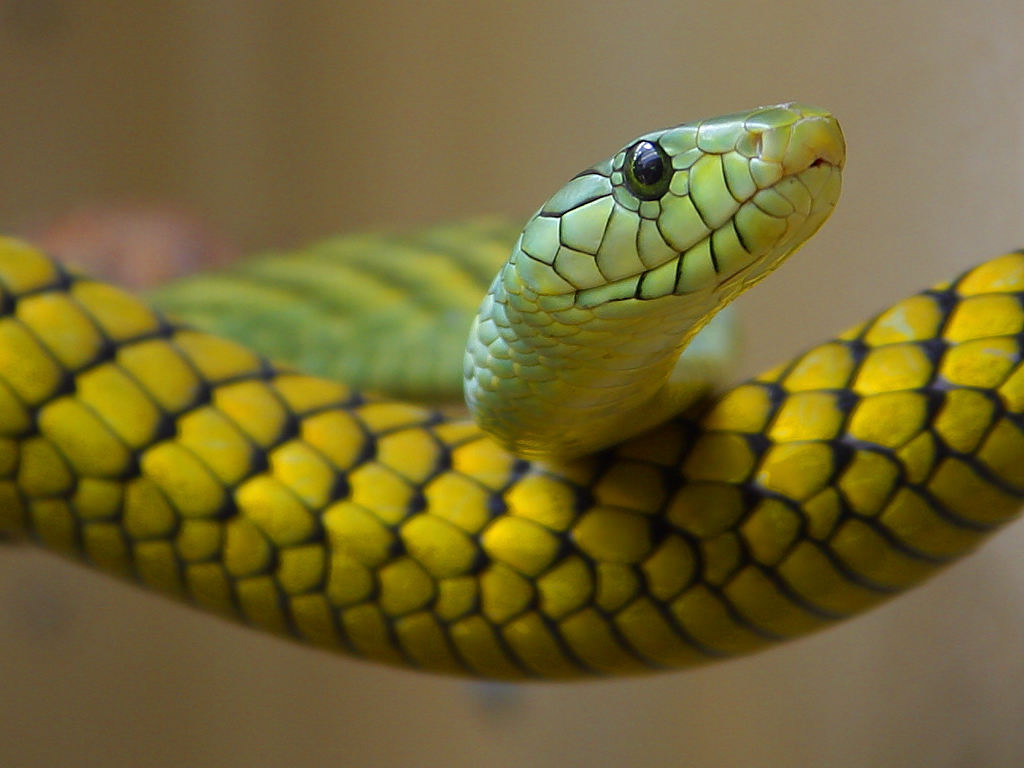
The Western Green Mamba (Dendroaspis viridis) brings aggression to the treetops as one of Africa’s most dangerous arboreal snake species. This slender, bright green serpent moves with incredible agility through its forest canopy habitat, capable of striking with precision even while balanced on narrow branches. Unlike many tree-dwelling snakes that flee upward when threatened, the Western Green Mamba frequently stands its ground or may even advance toward perceived threats, making multiple rapid strikes when cornered.
What makes this species particularly formidable is the combination of its excellent camouflage among foliage, its quick-acting neurotoxic venom, and its ability to strike repeatedly from various angles while navigating complex three-dimensional environments. The Western Green Mamba’s tendency to inhabit areas near human settlements in West Africa further increases the likelihood of dangerous encounters.
Understanding Snake Aggression: Nature vs. Nurture

Snake aggression rarely exists without purpose – it typically represents an evolutionary adaptation to specific environmental pressures rather than simple malice. Most “aggressive” behaviors in snakes are actually defensive responses triggered by perceived threats to their survival, whether from predators, competitors, or unwitting human encounters. Factors such as habitat loss, breeding season hormones, protection of young, previous negative encounters with humans, and pain from injuries can all significantly amplify a snake’s defensive responses.
Even among the most notorious species, individual temperament can vary widely, with some specimens showing greater tolerance for disturbance than others. Understanding that snake aggression is contextual rather than constant helps explain why even the most defensive species typically prefer avoidance when given the opportunity, reserving their aggression for situations where they feel truly threatened.
Conclusion

The world’s most aggressive snake species have evolved their defensive behaviors through millennia of natural selection, developing strategies that help them survive in environments filled with threats. From the lightning-fast strikes of the Black Mamba to the venom-spitting precision of cobras, each species employs unique tactics when confronted with danger. For humans, respecting these powerful creatures means understanding their behaviors, avoiding unnecessary encounters, and appreciating them from a safe distance. While their aggression may seem frightening, it represents an essential survival adaptation rather than malice – a reminder that in the natural world, aggression often serves as the ultimate form of self-preservation.

